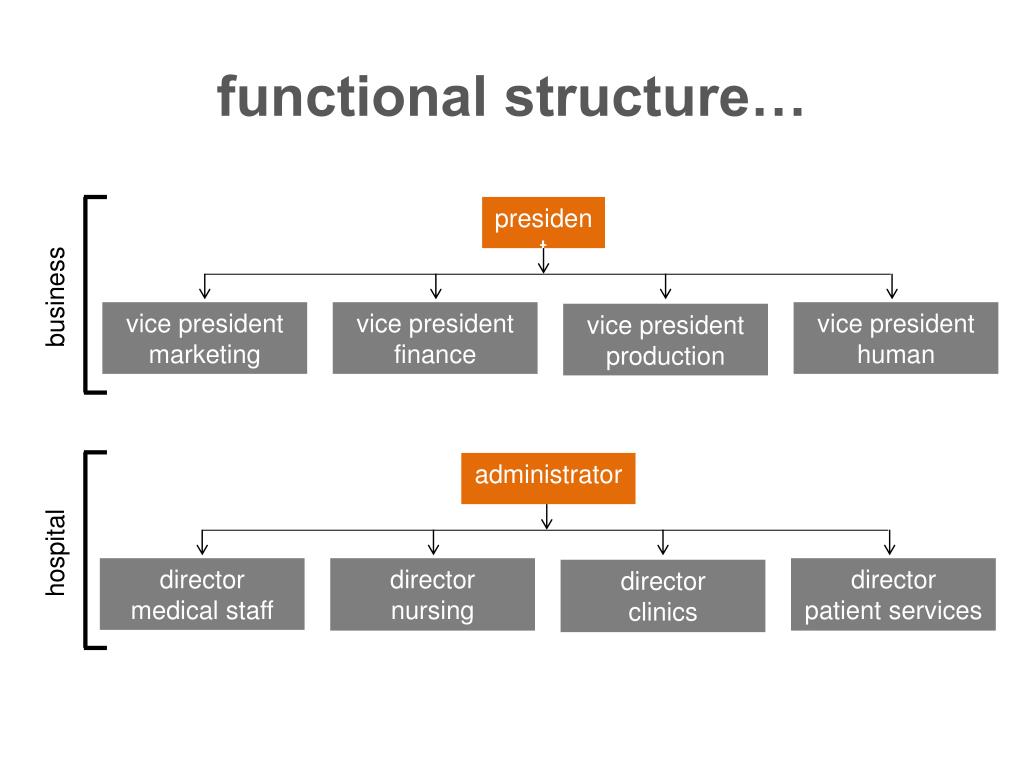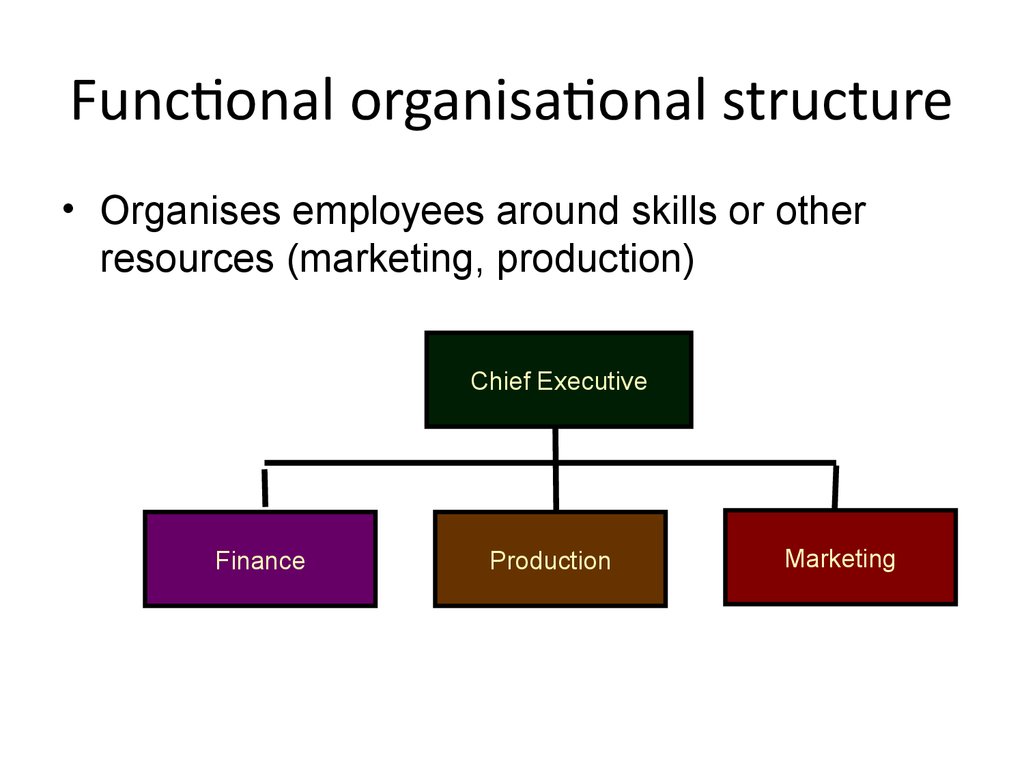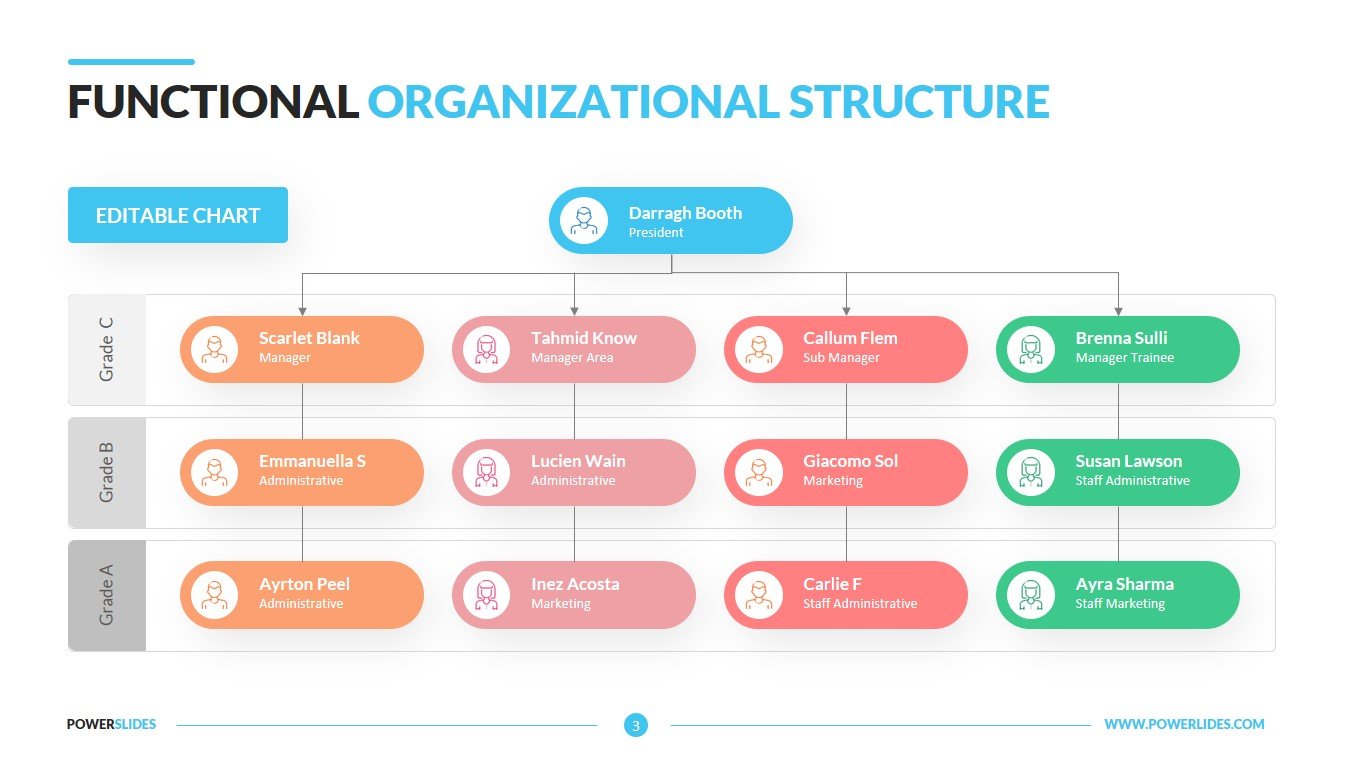

A functional structure is also known as a bureaucratic organizational structure and is commonly found in small to medium-sized businesses. In a functional structure, organizations are divided into specialized groups with specific roles and duties. Understanding how they work and what their benefits and drawbacks are can help you make a more informed decision as to which to implement in your workplace. There are four types of organizational structures. Related: Guide to Company Culture Types of organizational structures In addition, the more organized a structure is, the more efficiently a company operates. The more authority employees have, the higher up they'll be on the organizational structure. It outlines an employee's role and various responsibilities within a company.
FUNCTIONAL STRUCTURE HOW TO
Related: How To Build Business Development Skills What is an organizational structure?Īn organizational structure details how certain activities are delegated toward achieving an organization's goal. In this article, we define organizational structures, including their various types and the purpose and benefits of using them. Knowing how your company operates will help you perform in line with what's expected of you and help you become a better employee overall. Depending on the size of the company and the way it operates, some structures might be more beneficial than others. The manager at each division is accountable to their regional manager who in turn is accountable to the top management of the company for the performance of their divisions.Įach location of a divisional organisational structure is in some way autonomous, functioning as one entity by itself, but also part of a larger enterprise who have the same goals and brand standards.To run more efficiently, a business may implement an organizational structure in its workplace.

There is often an area manager that oversees several locations, with management at each location who are responsible for the day-to-day running of the business. Each division would have their own accounts department and would be tasked with developing their own specific products and services. Within the divisions they may also group employees in a similar way to a functional structure.įor example, a large, national sportswear company might have a commercial and sales division, a retail division and a head office division. They often have a large number of employees who need to be grouped into divisions that relate to their specific services or products. Typically, businesses with a divisional organisational structure are often split geographically. This type of structure is best suited to businesses that have a large scope with bases of operation dispersed nationally or internationally.

In some cases, it might be necessary to change or adapt the organisational structure. It might be a consideration when the initial business plan is being designed.

Most of the time, an organisational structure will be put into place when a business is in its infancy. The structure addresses how jobs are delegated, how the hierarchy of employees is designed and the way in which workers are organised, or grouped, into their department or individual roles. The level of formality a business might need in terms of its organisational structure, as well as the type of structure, will largely depend on the scope of operation and size of the business itself.Īn organisational structure is essentially the way in which a business is run it is a vital component to running an effective enterprise. They allow businesses to designate roles and responsibilities and help employees to understand their place within the enterprise. Most businesses need some type of organisational structure in order to be successful.


 0 kommentar(er)
0 kommentar(er)
